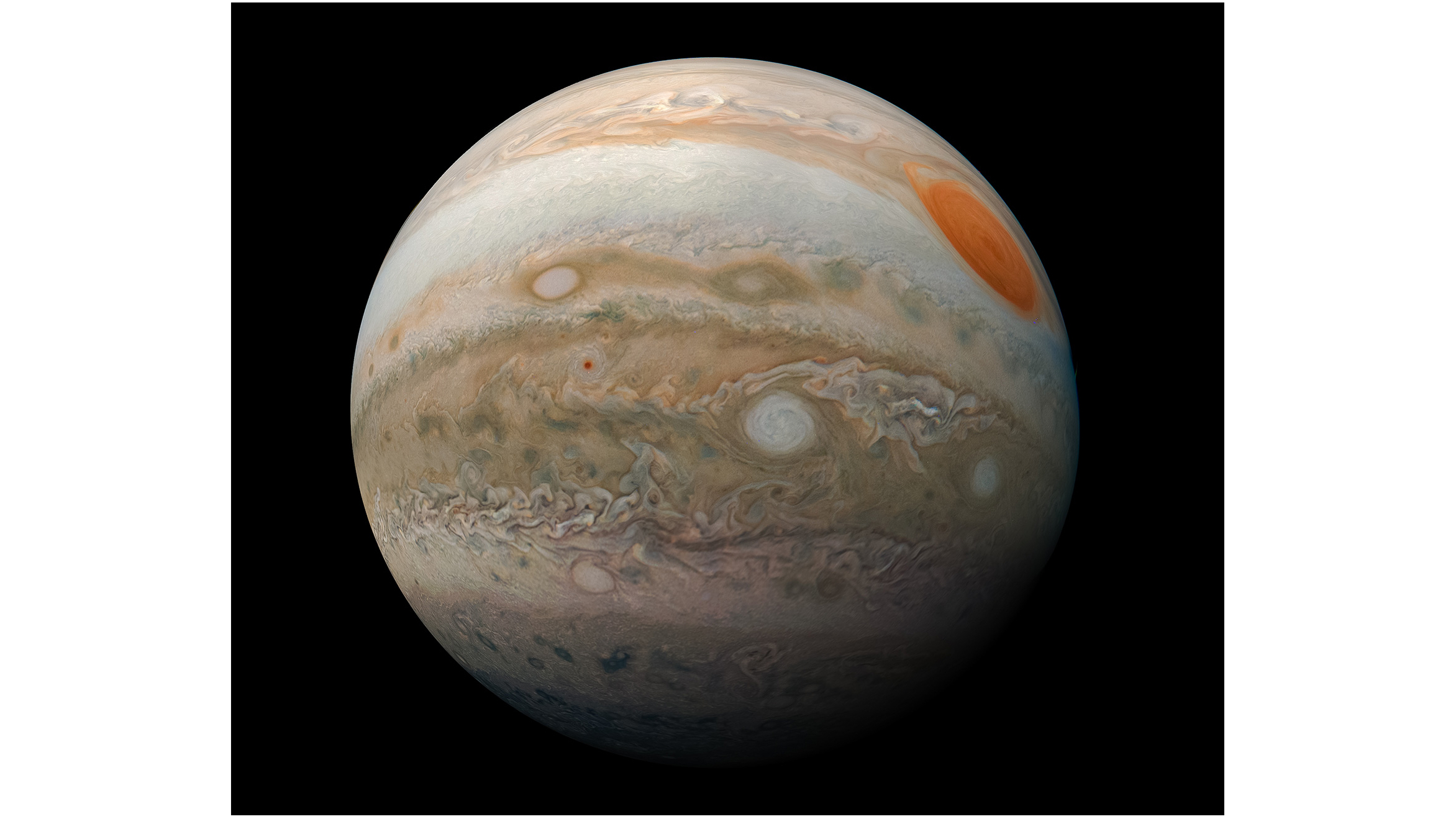Exoplanet-hunting instrument measures Jupiter's wild wind speeds
'This work affirms the feasibility of systematically monitoring the most distant atmospheres on gaseous planets.'

An instrument designed to study exoplanets has turned its focus to our own cosmic neighborhood to measure Jupiter's wind speeds.
Using the ESPRESSO spectrograph on the European Southern Observatory's (ESO) Very Large Telescope (VLT) in northern Chile, researchers analyzed changes in sunlight reflected by the clouds in the atmosphere of Jupiter. By measuring the shift in the wavelength of the reflected light, the researchers were able to calculate the speed of Jupiter's clouds relative to Earth, according to a statement.
"The exploratory application of this method with a 'top of the range' instrument such as ESPRESSO has resulted in a success that opens new horizons to the knowledge of our cosmic neighborhood," officials said in the statement. "This work affirms the feasibility of systematically monitoring the most distant atmospheres on gaseous planets."
Related: Amazing space views by ESO's Very Large Telescope (photos)
The ESPRESSO (Echelle SPectrograph for Rocky Exoplanets and Stable Spectroscopic Observations) instrument is designed to hunt for exoplanets, or planets beyond our solar system. Its main objective is to study distant stars and search for shifts in starlight that indicate the presence of an exoplanet.
In the new study, this technique, called Doppler velocimetry, was instead applied to the sunlight reflected by clouds at Jupiter, the largest planet in our solar system. The VLT observed Jupiter for five hours in July 2019, focusing on the equatorial zone, where the clouds are higher and brighter, as well as the north and south equatorial belts, where the clouds are darker and warmer, and located in a deeper layer of the atmosphere. The measurements revealed wind speeds ranging from 37 to 266 mph (60 to 428 kph) on the gas giant.
"Jupiter's atmosphere, at the level of the clouds visible from Earth, contains ammonia, ammonium hydrosulfide and water, which form the distinct red and white bands," study lead author Pedro Machado, of the Institute of Astrophysics and Space Sciences (IA) at the Faculty of Sciences of the University of Lisbon in Portugal, said in the statement.
Breaking space news, the latest updates on rocket launches, skywatching events and more!
"The upper clouds, located in the pressure zone of 0.6 to 0.9 bars, are made of ammonia ice," Machado added. "Water clouds form the densest, lowest layer and have the strongest influence on the dynamics of the atmosphere."
Their findings, published Nov. 24 in the journal Universe, shed light on Jupiter's atmospheric phenomena, including powerful storms like the Great Red Spot and string jet streams, and can also be applied to study other gas giants, like Saturn.

Samantha Mathewson joined Space.com as an intern in the summer of 2016. She received a B.A. in Journalism and Environmental Science at the University of New Haven, in Connecticut. Previously, her work has been published in Nature World News. When not writing or reading about science, Samantha enjoys traveling to new places and taking photos! You can follow her on Twitter @Sam_Ashley13.
